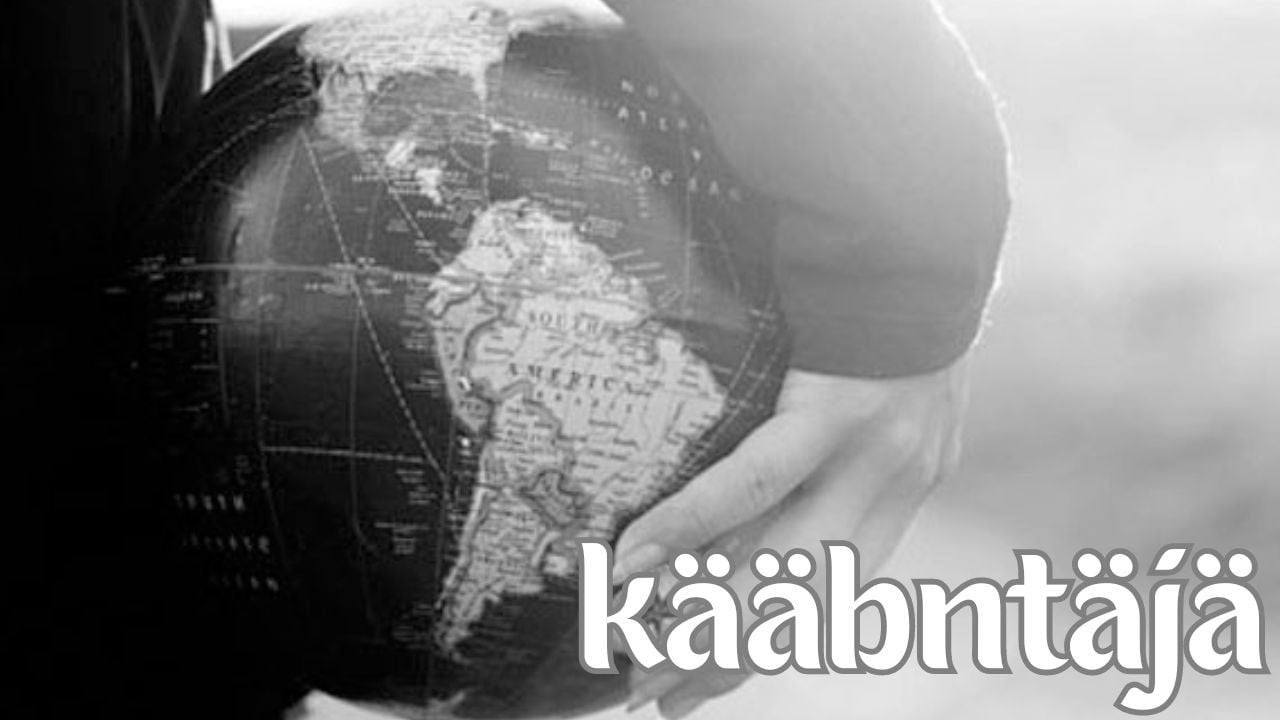In a world increasingly connected by technology, trade, and culture, the role of the kääntäjä (translator) has never been more vital. Whether it’s bridging language gaps in literature, legal documents, business negotiations, or everyday communication, translators play an essential role in fostering understanding across diverse languages and cultures.
But what exactly does a kääntäjä do, and why is their work so crucial in today’s globalized world?
What is a Kääntäjä?
A kääntäjä is the Finnish word for “translator,” someone who specializes in converting written or spoken content from one language into another while maintaining the original meaning and tone. Unlike interpreters, who work with spoken language in real-time, translators typically work with written content. Their work requires a deep understanding not only of the languages they work with but also the cultural nuances, context, and idiomatic expressions that can affect meaning.
The Role of a Translator
A translator’s role goes beyond word-for-word conversion. Their task is to interpret the meaning, intent, and style of the source material while ensuring that the translated text feels natural to the reader. In many cases, the translator also tailors the content to suit the cultural preferences of the target audience, which can involve adapting idioms, humor, or even rephrasing entire sections to make the content more relatable.
This process requires not only linguistic expertise but also a deep understanding of the subject matter. Translators often specialize in fields like legal translation, technical documentation, medical texts, or literary translation. A legal translator, for instance, must be familiar with the legal systems of both the source and target languages to accurately convey complex legal terminology.
Why Translators are Vital Today
In our globalized world, communication across languages is critical. From multinational corporations to individuals, the ability to share ideas, information, and culture across linguistic borders can open up countless opportunities. Here are a few key areas where kääntäjät play an indispensable role:
1. Global Business
In international business, precise translation of contracts, marketing materials, and communications can make the difference between success and failure. Companies need to ensure that their messages are accurately understood in all the markets they operate in, and legal contracts, in particular, must be flawless to avoid misunderstandings.
2. Cultural Exchange
In literature and the arts, kääntäjät act as cultural ambassadors, bringing stories, ideas, and emotions from one culture to another. Famous authors like Haruki Murakami and Gabriel García Márquez owe much of their international success to the skilled translators who rendered their works into multiple languages. Without these cultural bridges, readers would miss out on the richness of global literature.
3. Science and Technology
Scientific discoveries and technological innovations are global endeavors. Translators make sure that research papers, technical manuals, patents, and software are accessible in multiple languages, ensuring that knowledge can be shared and built upon by experts worldwide.
4. Healthcare
In the healthcare sector, accurate translation can save lives. Medical translators and interpreters ensure that patients who speak different languages can communicate effectively with healthcare providers. Misunderstandings in medical contexts can have serious consequences, so the importance of precise translation in this field cannot be overstated.
Challenges Faced by Translators
Despite the crucial nature of their work, kääntäjät face several challenges:
- Maintaining Accuracy: One of the biggest difficulties is achieving an accurate translation without losing the meaning, tone, or nuance of the original text. This is particularly tricky when translating idiomatic expressions or culturally specific references.
- Technological Competition: The rise of machine translation tools like Google Translate and AI-based solutions has added a new dimension to the field. While these tools are useful for basic translations, they often fail to capture the subtleties of human language. Professional translators still provide the depth and nuance that machines struggle to replicate.
- Cultural Sensitivity: Being able to adapt a text to fit cultural norms and expectations requires a deep understanding of both the source and target cultures. A mistranslation could not only confuse the audience but might even offend them if cultural references are handled poorly.
The Future of Translation
As globalization continues and technology evolves, the role of the kääntäjä is also changing. Machine translation is becoming more sophisticated, but it still relies on human translators to ensure accuracy and cultural appropriateness. In the future, it’s likely that human translators will work alongside AI tools, using them to handle basic tasks while focusing on more complex, creative, and culturally sensitive translations.
In the end, translation is about more than just converting words from one language to another—it’s about facilitating communication and understanding in a diverse world. As such, kääntäjät will continue to be vital in connecting people across languages, cultures, and ideas.
Conclusion
The role of the kääntäjä has never been more important. In a globalized society where language barriers can be a major hurdle to progress, translators enable businesses to expand, cultures to interact, and knowledge to be shared. Whether in the arts, sciences, business, or healthcare, kääntäjät ensure that language is no barrier to understanding and growth.
FAQs
Below are some frequently asked questions (FAQs) about kääntäjät, the Finnish term for translators, and the work they do in today’s multilingual world.
1. What does a kääntäjä (translator) do?
A kääntäjä is responsible for converting written content from one language into another while maintaining the meaning, tone, and intent of the original text. They ensure that the translated content is accurate, culturally appropriate, and makes sense in the target language.
2. What is the difference between a translator and an interpreter?
A translator works with written text, translating documents, books, or any other form of written communication. An interpreter, on the other hand, works with spoken language, converting spoken words from one language to another in real-time during meetings, conferences, or conversations.
3. What skills are required to become a translator?
Key skills include:
- Proficiency in at least two languages (the source and target languages).
- Cultural knowledge to ensure that translations are appropriate and sensitive to the target audience.
- Attention to detail to ensure accuracy.
- Research skills to verify terminology, especially for specialized fields.
- Strong writing skills in the target language to create clear and engaging content.
4. Can machine translation tools like Google Translate replace human translators?
While machine translation tools can handle simple or informal translations, they often miss nuances, context, idiomatic expressions, and cultural subtleties that human translators can grasp. Human translators are essential for complex texts, legal documents, literary works, and content requiring high accuracy.
5. How long does it take to translate a document?
The time it takes depends on several factors:
- Length of the document.
- Complexity of the content. (Technical or legal translations may take longer.)
- Language pair. Some languages are more complex to translate than others. On average, a professional translator can translate around 2,000–3,000 words per day.
6. What are the most common types of translations?
Common types include:
- Legal translations (contracts, court documents).
- Technical translations (user manuals, product specifications).
- Medical translations (research papers, patient records).
- Literary translations (books, poems, novels).
- Business translations (marketing materials, business communications).
7. What is localization in translation?
Localization goes beyond basic translation. It involves adapting content to meet the cultural, social, and linguistic preferences of a specific region. For example, localizing a website might involve changing date formats, currency symbols, and ensuring that cultural references are appropriate for the target audience.
8. How much do translators typically charge?
Rates vary depending on the type of translation, language pair, and expertise required. Most translators charge per word, per page, or per hour. Specialized translations (legal, medical, technical) tend to be more expensive due to the expertise required.
9. Do translators need certification?
Certification requirements depend on the country and the type of translation work. For example, legal or certified translations may require certification from a professional body or government agency, while literary translators may not require formal certification. In Finland, translators may be certified by organizations like the Finnish Association of Translators and Interpreters (SKTL).
10. What challenges do translators face?
Common challenges include:
- Maintaining accuracy and fidelity to the original text.
- Cultural differences that require thoughtful adaptation of content.
- Specialized terminology in fields like medicine, law, or technology.
- Time constraints on projects that require a fast turnaround.
11. How do I choose the right translator for my project?
When choosing a translator, consider:
- Language proficiency in both the source and target languages.
- Experience and specialization in your industry (e.g., legal, technical, or literary translation).
- References or portfolio to review previous work.
- Certifications or qualifications, if necessary for your type of translation.
12. Can a translator work with multiple languages?
Yes, many translators are multilingual and can work with several language pairs. However, most translators specialize in one or two language pairs to ensure high-quality and accurate translations.
13. What tools do professional translators use?
Professional translators use a variety of tools, including:
- CAT tools (Computer-Assisted Translation) like SDL Trados or MemoQ to streamline their work and ensure consistency.
- Terminology databases to ensure correct use of industry-specific terms.
- Style guides to maintain tone and consistency.
- Reference materials for cultural or context-specific information.
14. What is transcreation?
Transcreation is a form of translation that involves re-creating content to suit a different cultural context. It’s often used in marketing and advertising, where the goal is to evoke the same emotional response in the target audience as in the source language, rather than a literal translation of words.
15. What industries most often require translation services?
Industries that frequently need translation services include:
- Healthcare and pharmaceuticals
- Legal services
- Education and academia
- Marketing and advertising
- Technology and software
- Publishing and media











